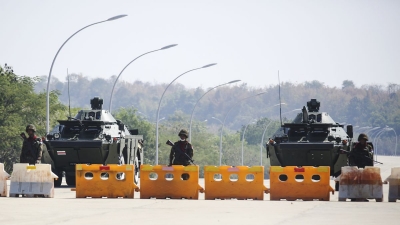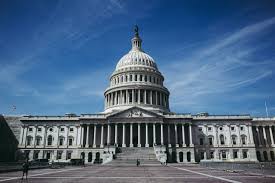What is a coup?

On February 1, 2021, people of Myanmar woke up to the news that the country’s military has seized power from the elected government in a coup. The country’s President Win Myint, State Counsellor and de facto leader Aung San Suu Kyi, and numerous members of her party National League for Democracy (NLD) were detained. In a television address, the army announced that power had been handed over to the commander-in-chief of the armed forces, Min Aung Hlaing, and that it was declaring a national state of emergency for one year. People also fear that there could be wider clampdown under the military rule. Let’s take a look at what led to a coup Myanmar in this Five Ws and One H..
A coup (pronounced koo) is when power is illegally and unconstitutionally seized from the government of country, by a political faction or the military. Violence is part of many coups. In other words, a coup is the forcible overthrow of ruler or government. The word coup is short for the French term “coup detat,” which translates as “stroke of state.”
Coup is often the result of displeasure with how the country is run by the elected government or ruler. A military coup, as in the case of Myanmar, is when the military takes control of governance by staging a coup.
What are the different types of coup?
The world has witnessed different kinds of coup and political scientists categorise them into various types. Some of them are military coup, civil society coup, parliamentary coup, presidential coup, breakthrough coup, silent coup, democratic coup and the guardian coup.
Why did the military stage a coup in Myanmar?
A crisis has been brewing in Myanmar since the November 2020 parliamentary election, in which Suu Kyi’s NLD party won in a landslide against the military-backed Union Solidarity and Development party. The latter won just 33 out of 476 seat. But the military refused to accept the results, claiming widespread irregularities in the election and demanded a new military-supervised election. However, the election commission refused, saying there was no evidence to support its claims of fraudulence.
Citing a provision in the Constitution it had drafted (in 2008), the military warned that it could launch a coup if it felt a threat to the nation’s sovereignty.
And on February 1, which was supposed to be the first day of a new session of parliament since the November election, the military staged a coup.
What is the background?
Myanmar gained independence from Britain in 1948 and Sao Shwe Thaik became its first president and U Nu became its first prime minister. In 1962, the Tatmadaw, as the country’s military is formally known, staged a coup and took over power. Since then, Myanmar has switched between military rule and civilian leadership.
Myanmar was ruled by the armed forces from 1962 to 2011, when pressure from the international community forced the military to cede power and a new government ushered in a return to civilian rule. But the Constitution the military had drafted ahead of this cessation gave it at least 25% of the seats in the Legislature. According to the Constitution, any amendment is possible only if over 75% of lawmakers vote for it. So, in effect, the military holds the power to veto any attempt by the government that could be seen as a threat to its authority.
In 2015, Suu Kyi’s NLD won a sweeping victory in the general elections. However, the military retained significant power under the Constitution that also barred her from the presidency, as her two sons are citizens and ran the government as a de facto leader (a leader in fact, whether or not constitutionally binding).
The election in November 2020 was only Myanmar’s second-ever election since the end of the military rule in 2011. Post election, Suu Kyi proposed to make amendments to Myanmar’s Constitution and Strip the military of many of its authorities. This move received major support from people, but ruffled the feathers of the military.
How has the international community reacted?
World leaders condemn the coup and detainment of Suu Kyi. UN Secretary-General Antonio Guterres said it was a “serious blow to democratic reforms”, while the U.S. President Joe Biden has threatened to reinstate sanctions. Meanwhile, people of Myanmar resorted to non-violent means to register their protest against the coup.
What are some of the coups in the recent times?
Many coups (pronounced kooz) have been staged in the past. Here, we are listing some of the recent ones.
1999 Pakistan coup: The the military leader Parvez Musharraf overthrew the Pakistani government under Prime Minister Nawaz Sharif on October 12, 1999. It was a bloodless coup as Musharraf declared an emergency and took control of the entire country.
2013 Egyptian Coup: On July 3, 2013, Egyptian army chief General Abdel Fattah al-Sisi led a coalition to remove the President of Egypt, Mohamed Morsi, from power and suspended the Egyptian constitution.
2016 Turkish failed coup attempt: On July 15, 2016, the Turkish military attempted a coup against President Recep Tayyip Erdogan, but could not succeed in overthrowing the government. Hundreds were killed in the violence that ensued and thousands were detained subsequently.
2019 Sudanese coup: On April 11, 2019, Sudanese President Omar al-Bashir, after nearly 30 years in office, was overthrown by the Sudanese army after popular protest demanded his departure.
Picture Credit : Google
